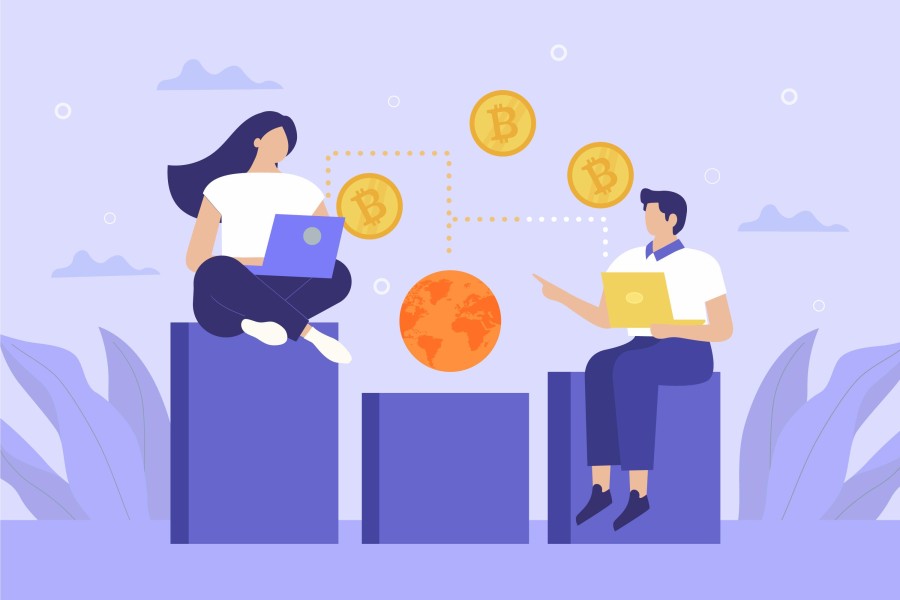Peer-to-peer (P2P) lending is a way for people to borrow and lend money directly to each other without involving traditional banks. This method of lending is becoming increasingly popular because it often offers better interest rates and is more accessible than conventional loans. In this article, we will explore what P2P lending is, how it works, its benefits and risks, and more.
What is Peer-to-Peer Lending?
P2P lending is a financial system where individuals can lend money to other individuals or small businesses through online platforms. These platforms connect borrowers directly with lenders, bypassing the need for traditional financial institutions like banks.
How Does Peer-to-Peer Lending Work?
- Signing Up: Both borrowers and lenders sign up on a P2P lending platform.
- Profile Creation: Borrowers create profiles detailing how much money they need and what it’s for. Lenders create profiles indicating how much money they are willing to lend.
- Credit Check: The platform conducts a credit check on the borrowers to assess their creditworthiness.
- Loan Listing: Approved borrowers list their loan requests on the platform.
- Funding the Loan: Lenders browse through the loan requests and choose which ones to fund. They can choose to fund part of a loan or the entire amount.
- Loan Issuance: Once a loan is fully funded, the platform transfers the money to the borrower.
- Repayment: Borrowers repay the loan in monthly instalments, which include both principal and interest. The platform distributes the repayments to the lenders.
Benefits of Peer-to-Peer Lending
Better Interest Rates
P2P lending often offers lower interest rates for borrowers and higher returns for lenders compared to traditional banks.
Accessibility
People with lower credit scores who might not qualify for traditional loans can often get loans through P2P platforms.
Transparency
Borrowers and lenders can see all the details of the loan, making the process more transparent.
Efficiency
The entire process is usually quicker than traditional banking, with less paperwork involved.
Also Read: How To Avail A ₹50000 Loan On Pan Card Verification?

Risks of Peer-to-Peer Lending
Credit Risk
Borrowers may default on their loans, meaning they fail to repay. This risk is higher than with traditional bank loans.
Regulatory Risk
P2P lending is relatively new and regulations are still evolving. Changes in laws could affect the operation of P2P platforms.
Platform Risk
The P2P lending platform itself could fail, potentially putting lenders’ investments at risk.
Liquidity Risk
Lenders may find it difficult to sell their investments before the loans mature, which can tie up their money for a longer period.
How an Airtel Personal Loan Can Help You?
Airtel also offers personal loans through its digital platform. This service is integrated into the Airtel Thanks app, making it convenient for users to apply for loans directly from their smartphones. Airtel’s personal loan service is an example of how established companies are entering the P2P lending space, providing more options and greater accessibility for borrowers.
Conclusion
Peer-to-peer lending is a modern alternative to traditional bank loans, offering numerous benefits but also carrying certain risks. So, if you learn how P2P lending works and choose reputable platforms, you can certainly make the right decisions for yourself. Platforms like Airtel’s personal loan service demonstrate the growing popularity and accessibility of P2P lending.
Also Read: How To Maintain A Healthy CIBIL Score?
FAQs
- Is P2P lending safe?
While P2P lending can be safe, it carries more risks than traditional banking. It’s essential to choose reputable platforms and understand the risks involved.
- Can I get a P2P loan with bad credit?
Yes, many P2P platforms are willing to lend to individuals with lower credit scores, though the interest rates might be higher.
- How do P2P platforms make money?
P2P platforms usually charge fees to both borrowers and lenders. These can include origination fees, service fees, and late payment fees.
- What happens if a borrower defaults?
If a borrower defaults, the lender may lose some or all of their investment. Some platforms have provisions to recover the debt, but it’s not guaranteed.
- How long does it take to get a P2P loan?
The process can be quicker than traditional loans, often taking a few days to a couple of weeks from application to funding.


 Get App
Get App  Airtel Store
Airtel Store  Login
Login 


